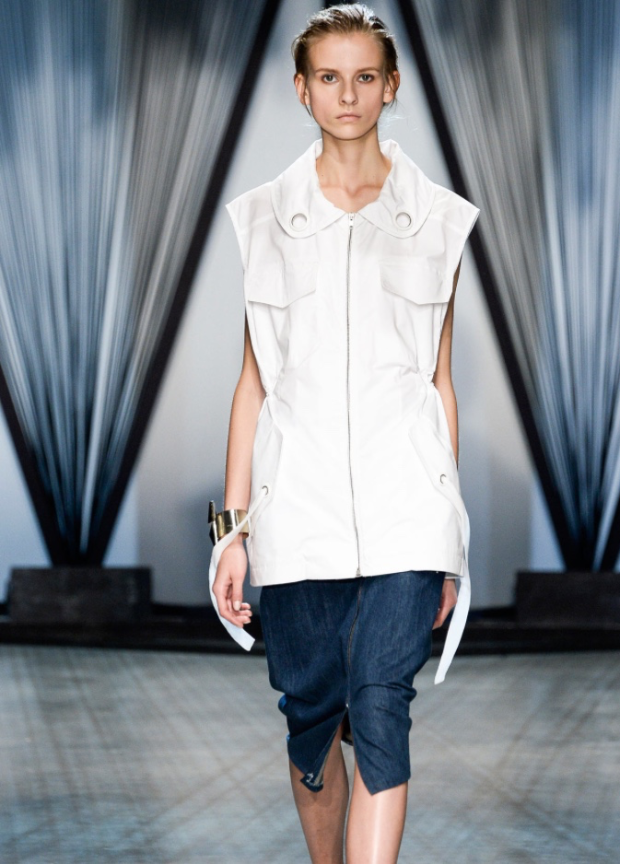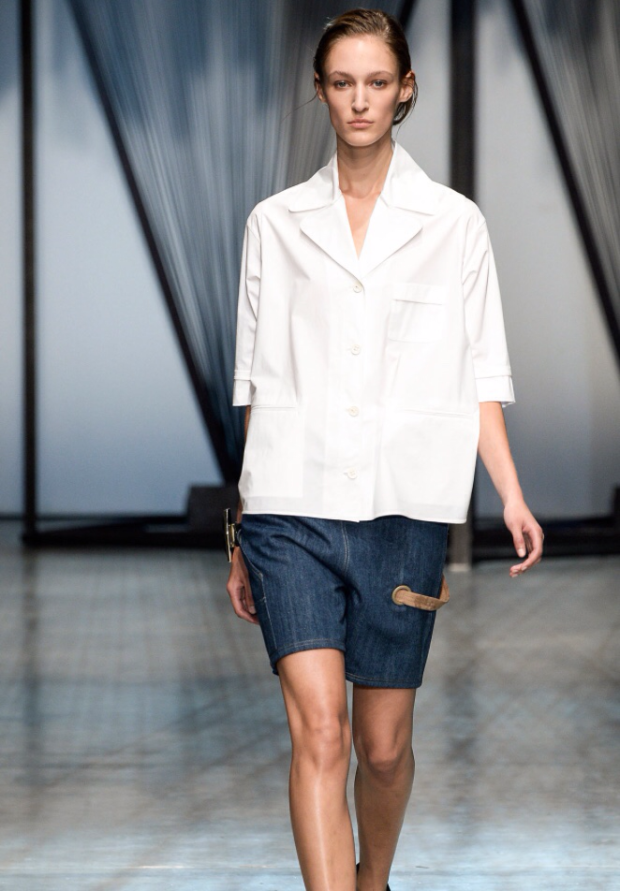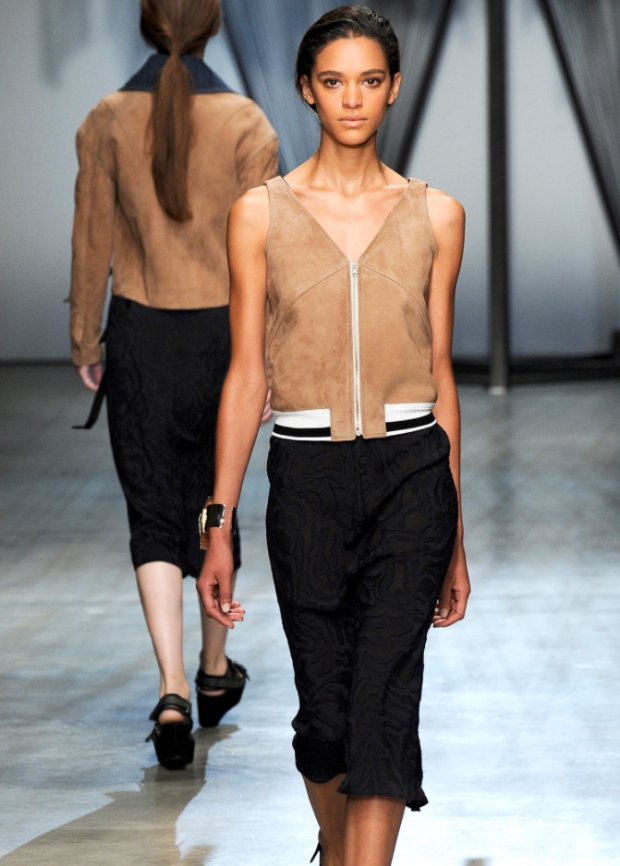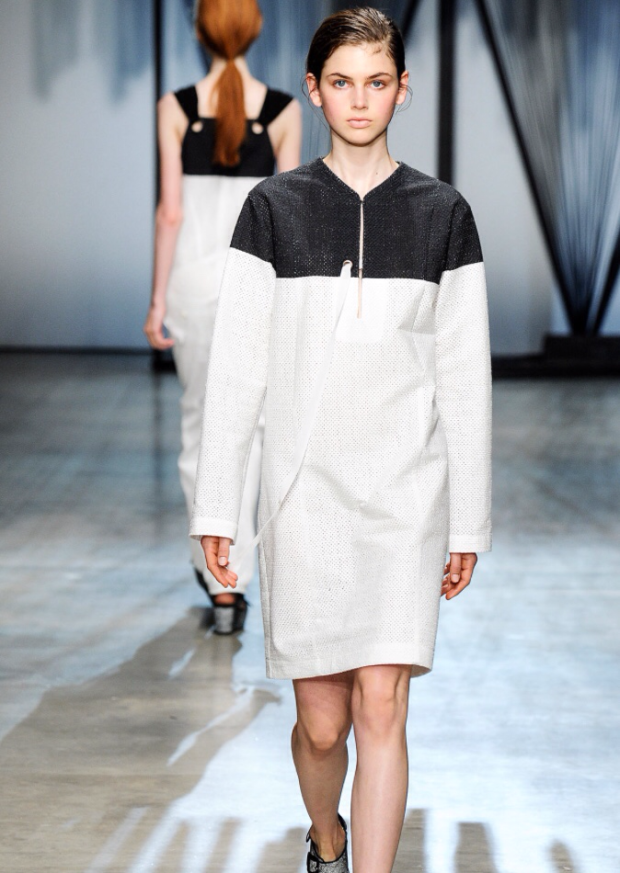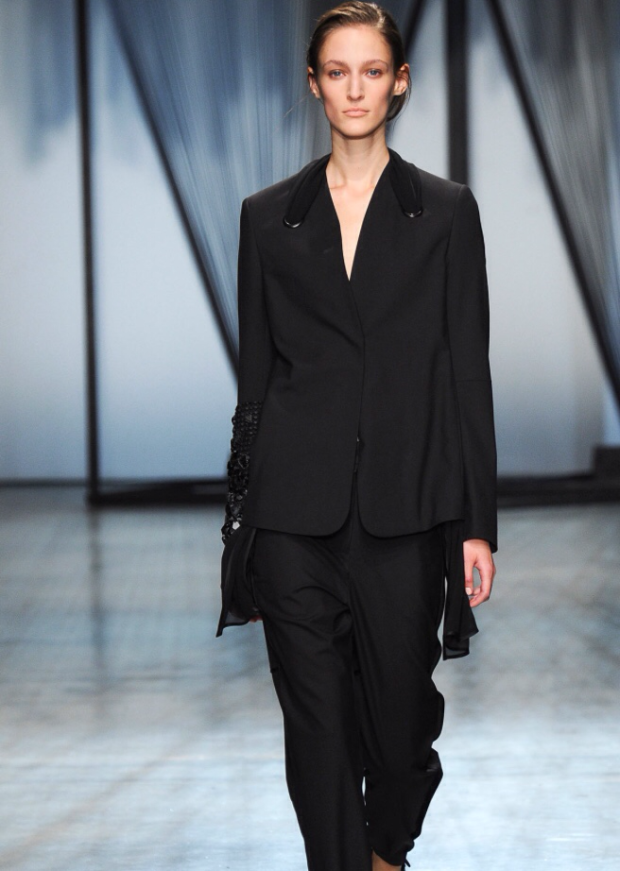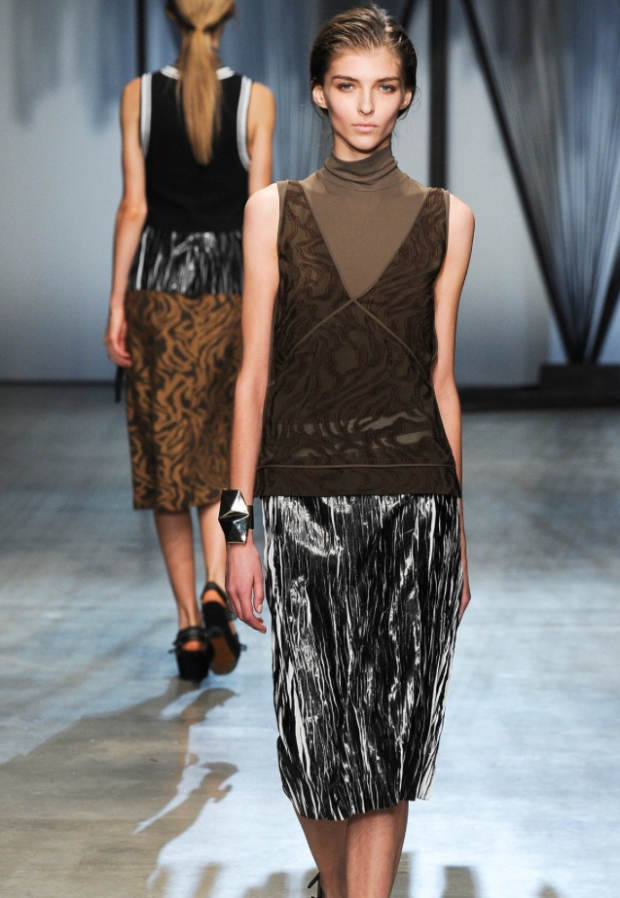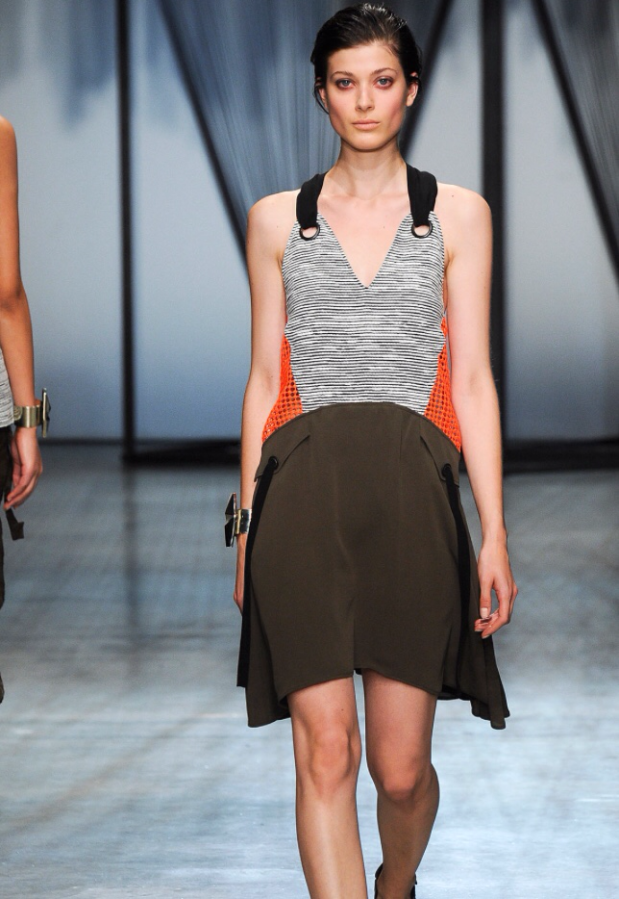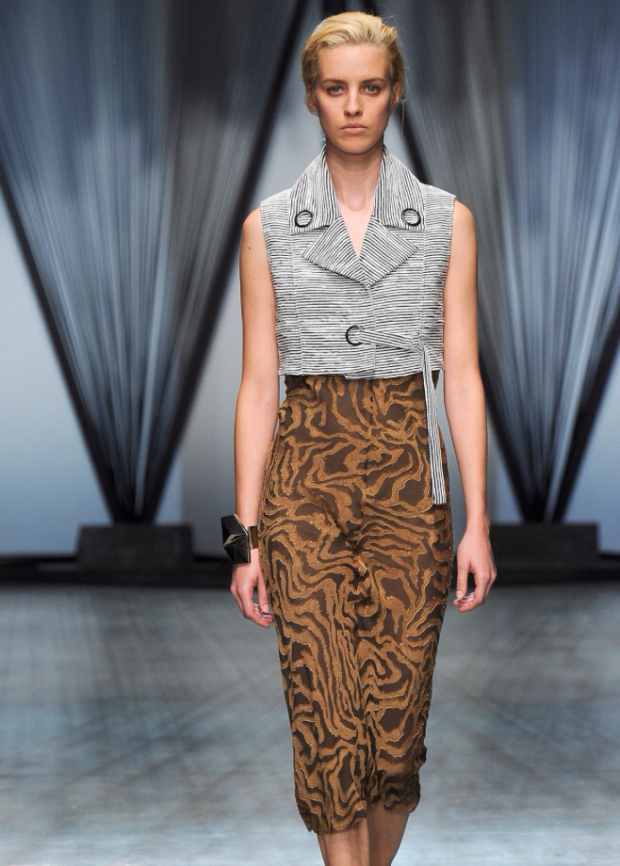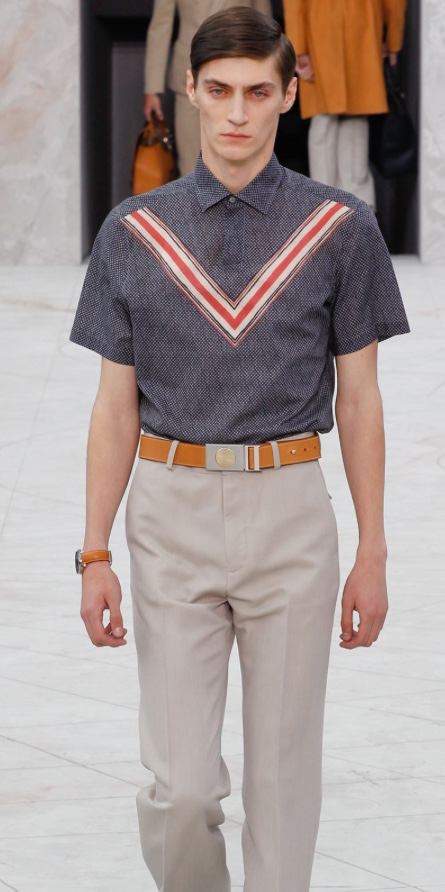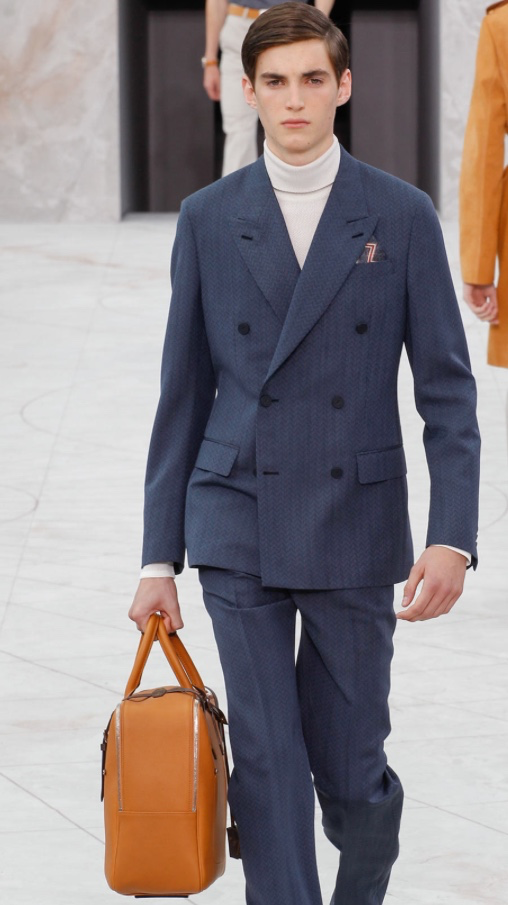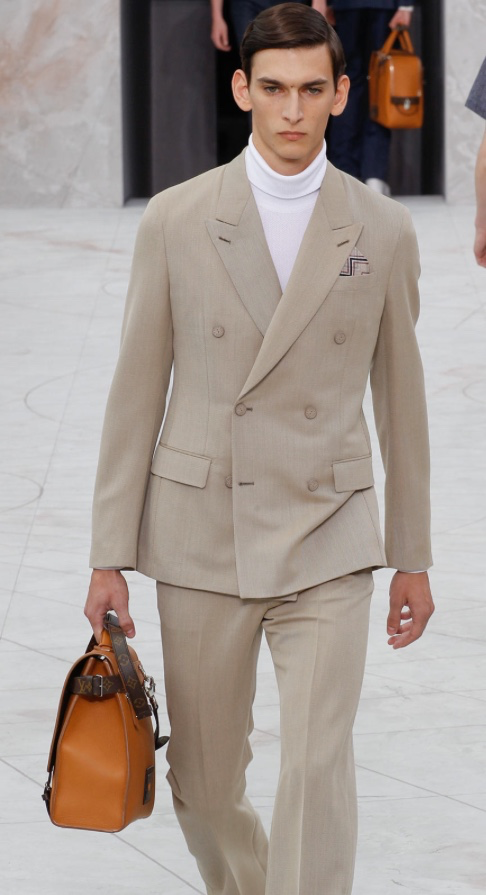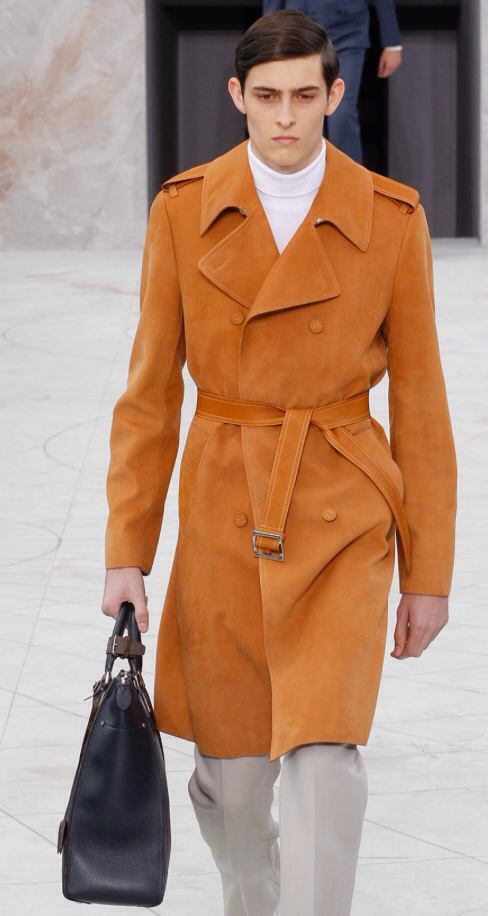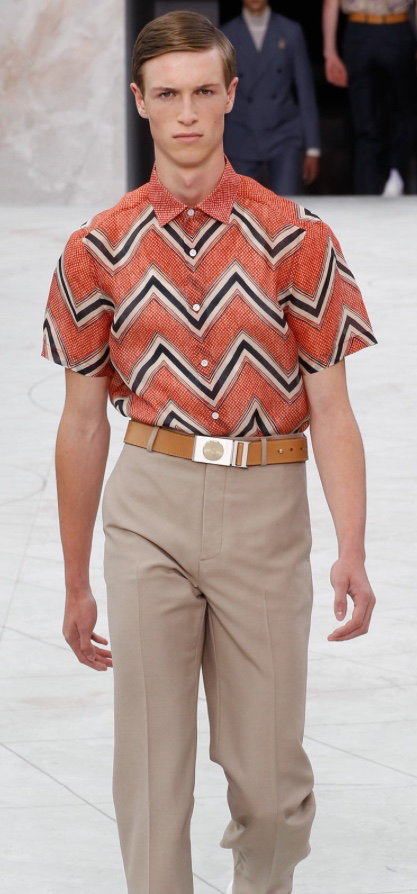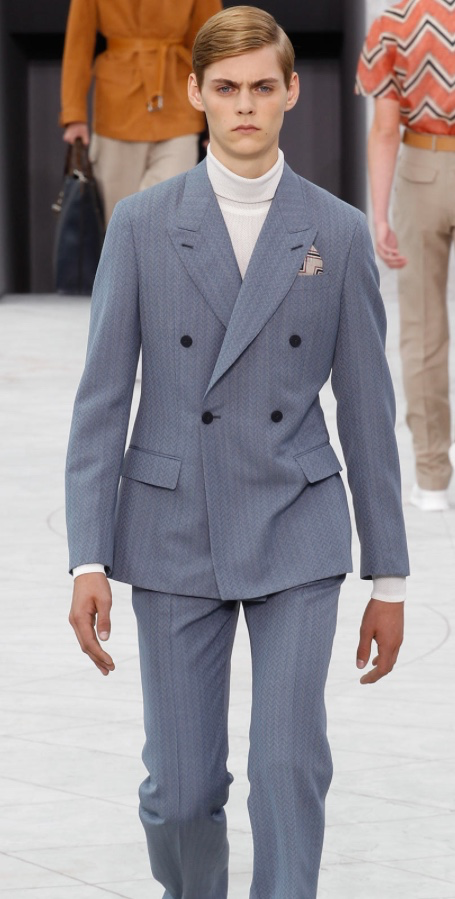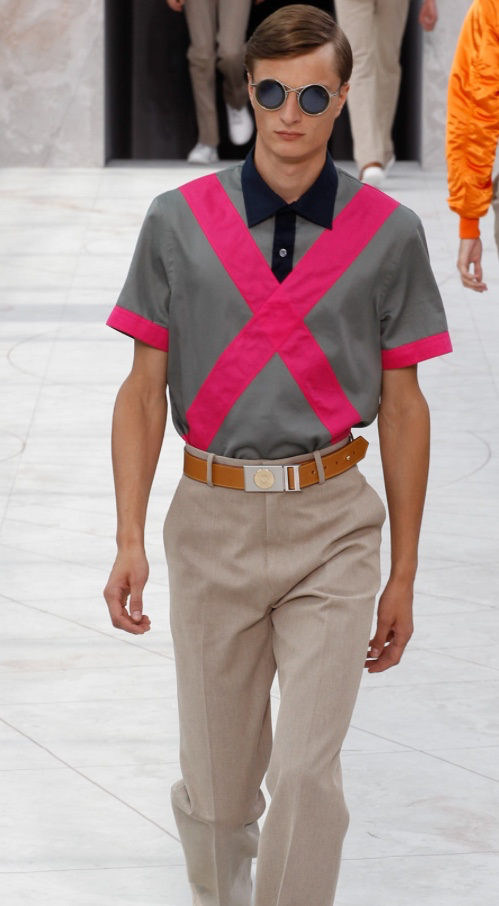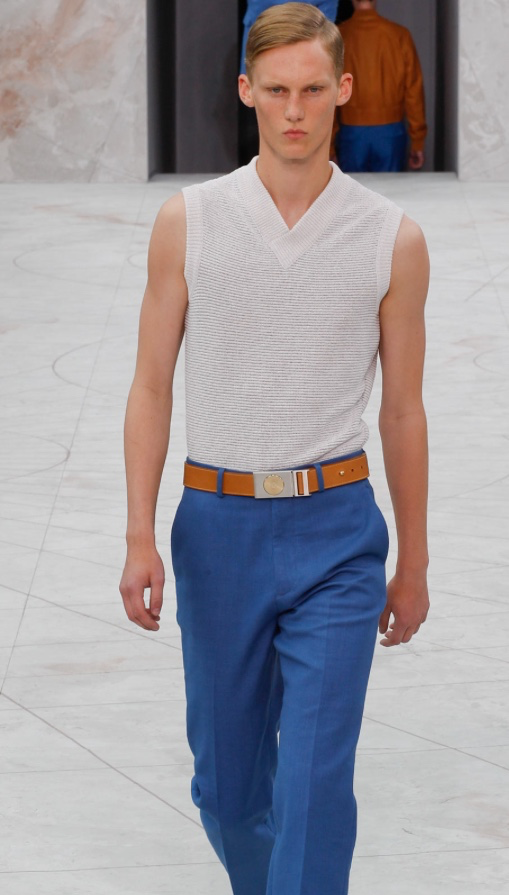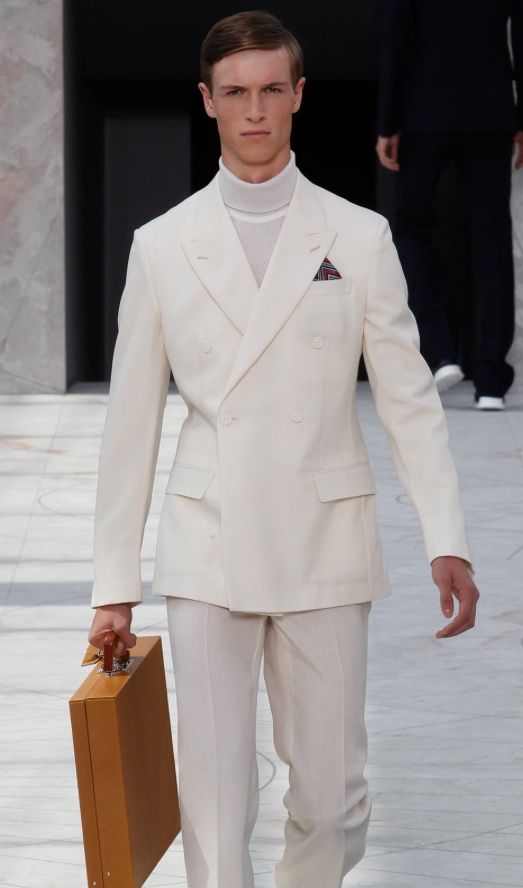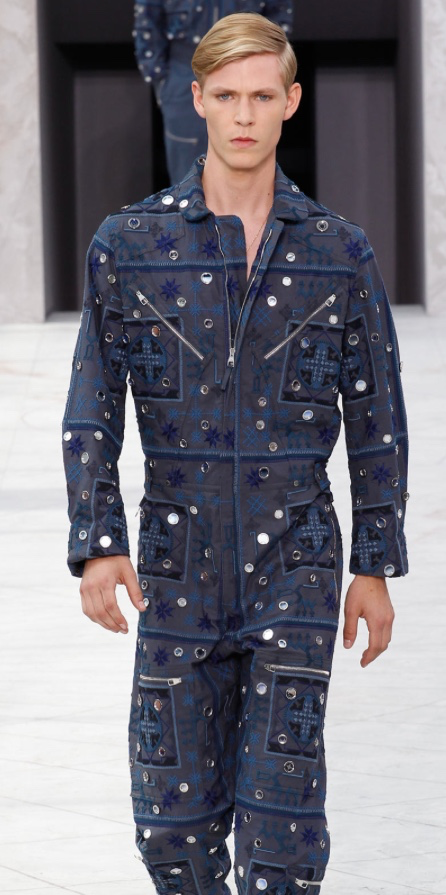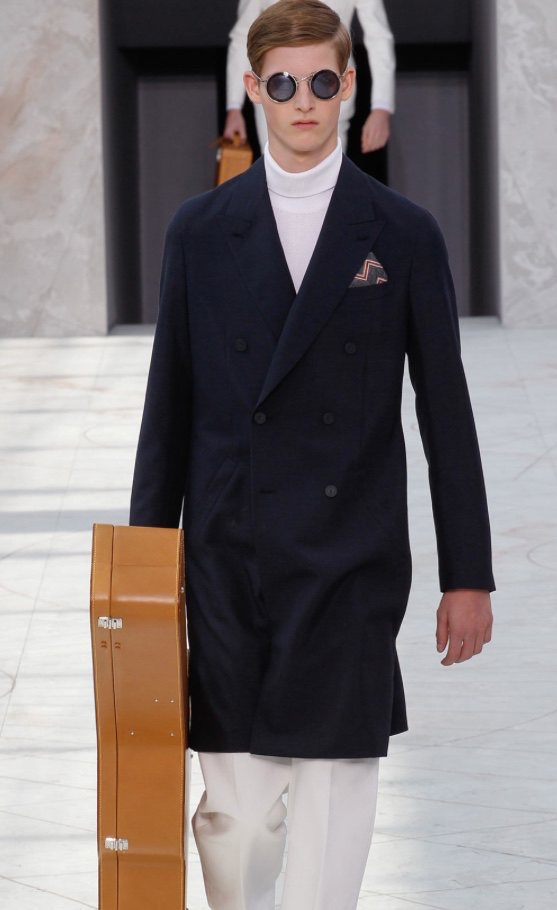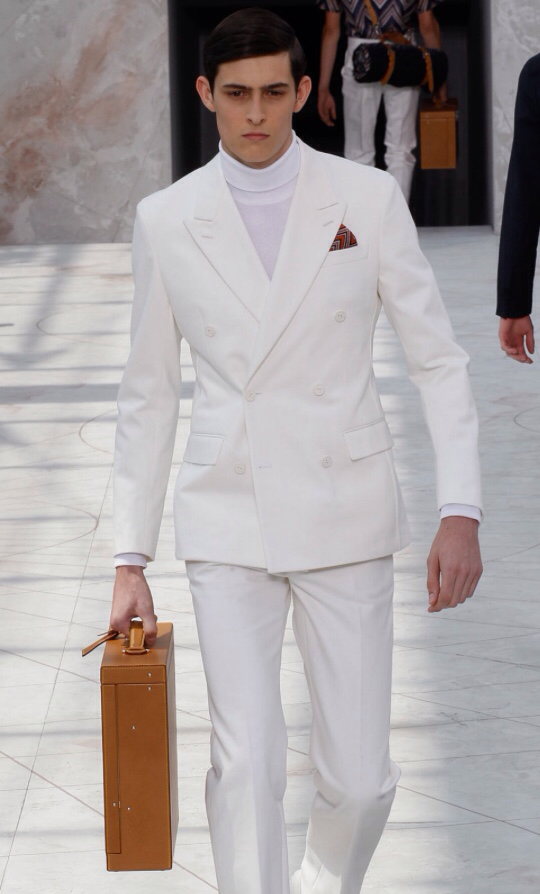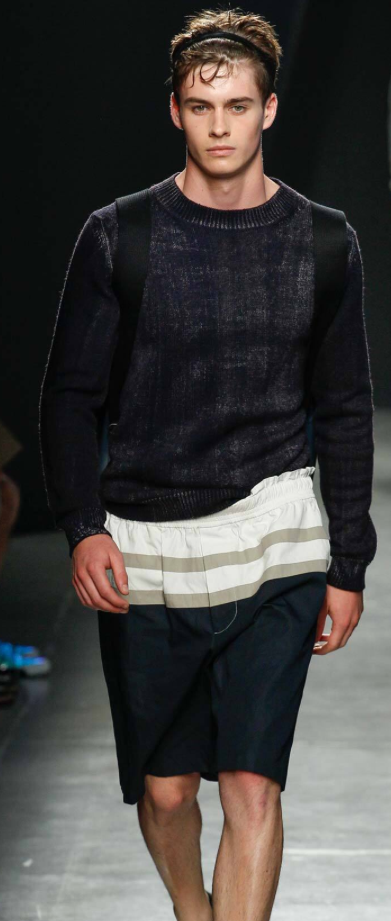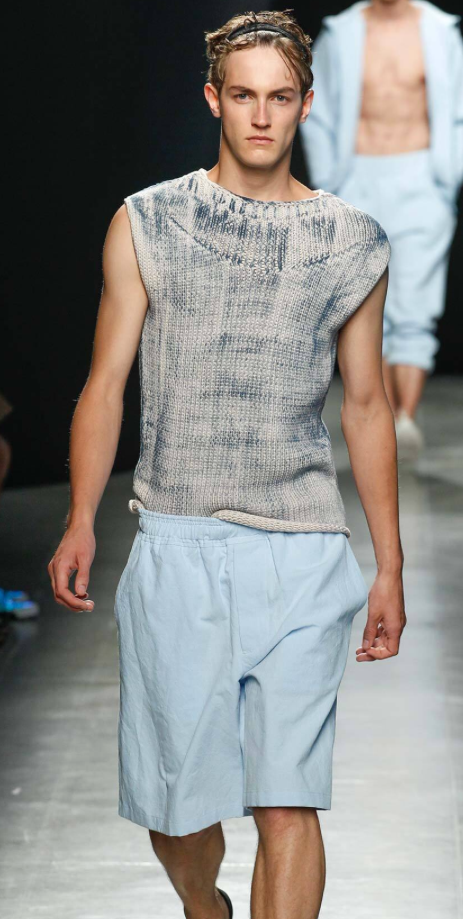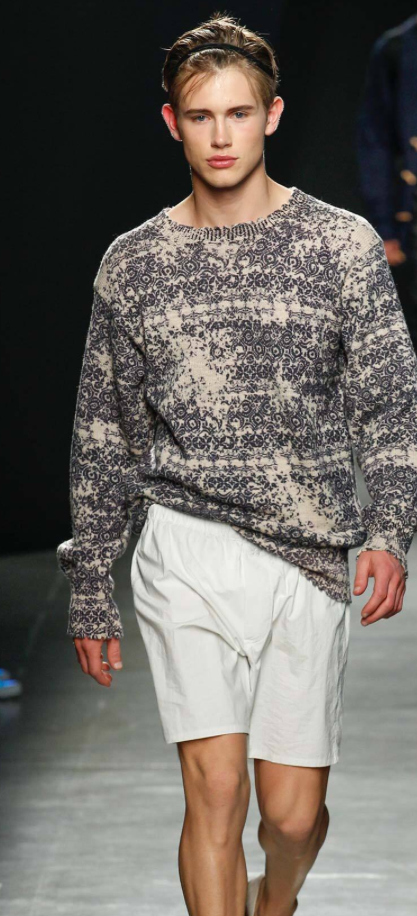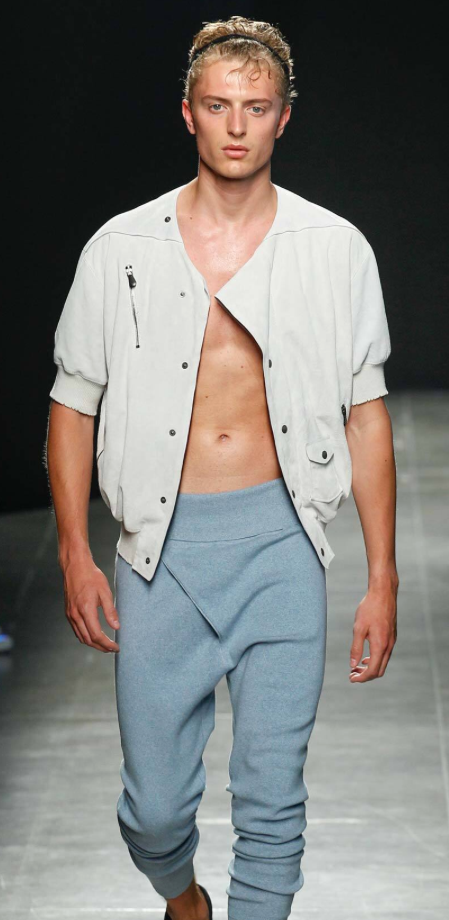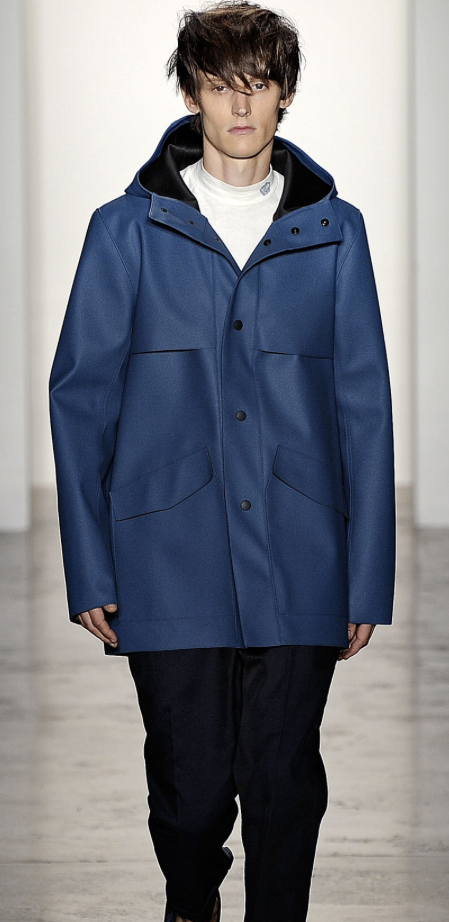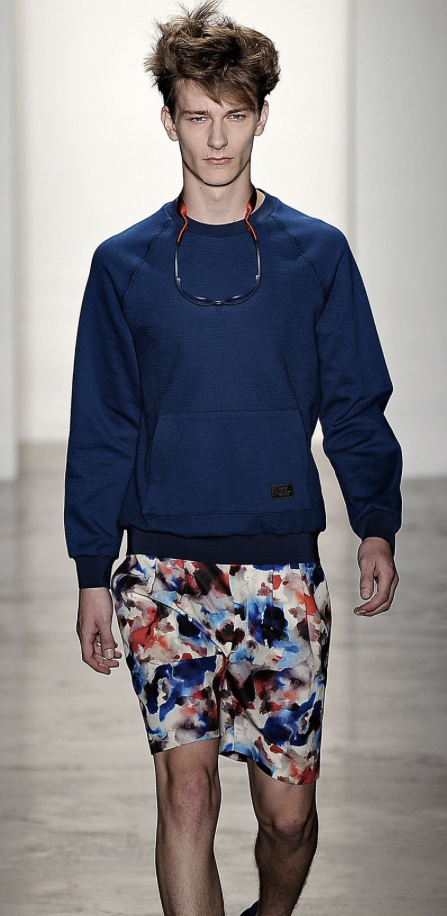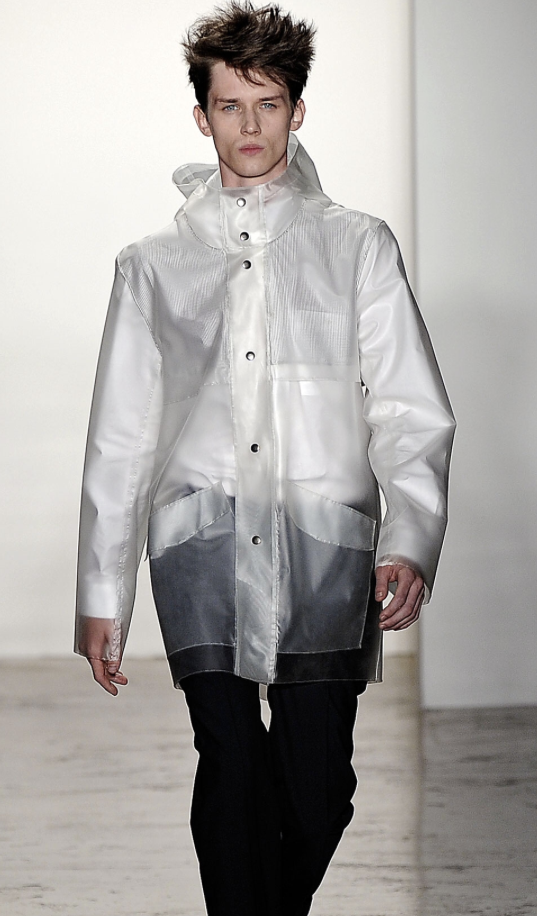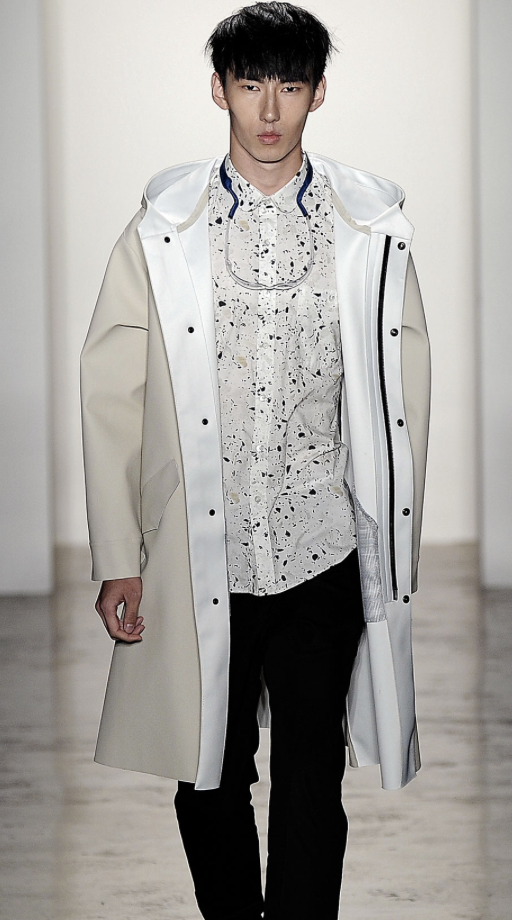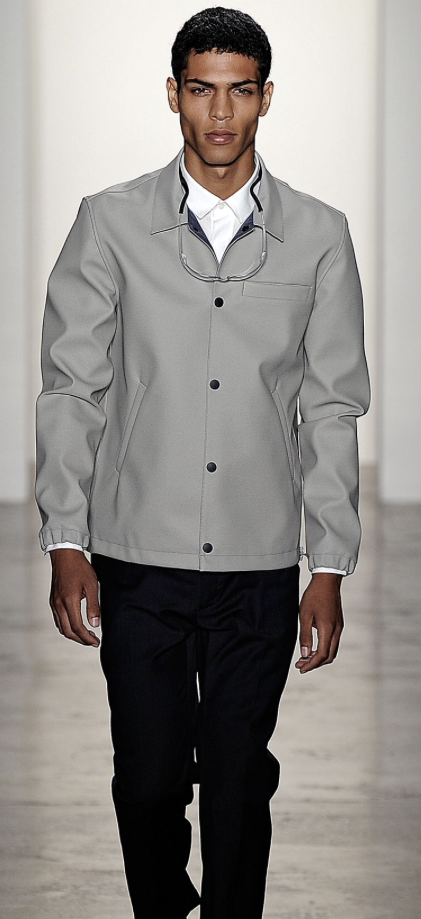The sounds of nature have abounded at the shows this season: birdsong, waves crashing. Even a designer as urban-minded as Damir Doma is thinking about the beach. You can hardly blame him: With his signature collection, a lower-priced line, and a men’s offering, Doma is looking at upward of 10 collections a year. His modern customer is just as busy, if she’s anything like jewelry makers Annette and Phoebe Stephens of Anndra Neen, longtime clients who collaborated with Doma on the show’s necklaces and bracelets.
The idea of escape infused the new collection with a subtle ease. Doma’s not the kind of guy who makes dresses from striped towels. Jackets sashed closed, instead of buttoned; a halter dress was suspended from a scarf that he wound through large leather grommets; tanks and tees were made from a mesh-like lace, as cool as a breeze. “I would like my woman to breathe a bit more,” he said backstage. Making customers’ lives easier is often code for boring clothes, but Doma’s approach to wardrobe staples was unexpected and thoughtful. Denim, for instance, was cut into pajama shapes, doubling the comfort factor. And he romanced other familiar items, cutting a pantsuit in a navy fil coupe or adding sheer insets to an understated little black dress. The athletic ribbed collars and waistbands were a little predictable; sports references are tending to feel played out. Otherwise, Doma’s day at the beach was a very pleasant trip.
